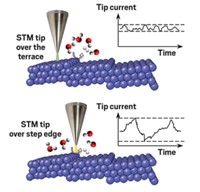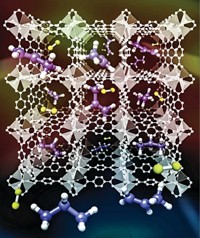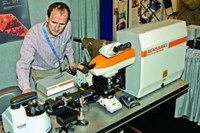Advertisement
Grab your lab coat. Let's get started
Welcome!
Welcome!
Create an account below to get 6 C&EN articles per month, receive newsletters and more - all free.
It seems this is your first time logging in online. Please enter the following information to continue.
As an ACS member you automatically get access to this site. All we need is few more details to create your reading experience.
Not you? Sign in with a different account.
Not you? Sign in with a different account.
ERROR 1
ERROR 1
ERROR 2
ERROR 2
ERROR 2
ERROR 2
ERROR 2
Password and Confirm password must match.
If you have an ACS member number, please enter it here so we can link this account to your membership. (optional)
ERROR 2
ACS values your privacy. By submitting your information, you are gaining access to C&EN and subscribing to our weekly newsletter. We use the information you provide to make your reading experience better, and we will never sell your data to third party members.
Analytical Chemistry
Taking Reactor Temperatures
NMR Thermometry: New method could fine-tune product output and energy efficiency
by Mitch Jacoby
October 24, 2013
| A version of this story appeared in
Volume 91, Issue 43

If researchers could one day look inside working reaction vessels to see and precisely measure a variety of aspects of chemical reactions as they occur, that knowledge could transform many important industrial processes. It would allow engineers to customize reactor geometry and dimensions and tailor catalyst distribution to maximize energy efficiency, product output, and chemical selectivity.

That day may be at hand. A team of researchers led by University of California, Los Angeles, chemists Nanette N. Jarenwattananon and Louis-S. Bouchard has developed a rudimentary method for peering inside reactor vessels while they are running and measuring the temperature of gases involved in the process under way. The technique, based on nuclear magnetic resonance imaging, is noninvasive and provides thermal maps with millimeter spatial and high thermal resolution (Nature 2013, DOI:10.1038/nature12568).
This NMR technique could be the breakthrough that gives researchers a tool, based on familiar technology, to monitor reactants as they flow past catalysts and turn into products, Bouchard says. They would be able to pinpoint where within a reactor the chemistry takes place and which regions are chemically hot and which are not, he says.
In many industrial reactors, such as those used in petrochemical refining, chemistry occurs at the interface between gas-phase reactants and solid catalysts. Researchers have tried to develop optical probes and various kinds of sensors to monitor heat and gas flow inside reactors, but these devices work poorly inside equipment that is packed with solid catalysts, and in some cases the monitoring apparatus can perturb the flow of reactants and products.
The UCLA group developed the new NMR thermometry method to sidestep all of those problems. They place the reactor inside the NMR equipment and subject the sample to a nonuniform magnetic field as is commonly done in NMR experiments. As cool gas molecules move sluggishly through the nonhomogeneous field, they experience a broad distribution of field strengths that “read” as broad NMR line widths, Bouchard explains. In contrast, hot gases zip around quickly, causing those molecules to experience a narrowly defined average field strength, which reads as sharper line widths. These temperature-based changes in line width, then, can be used to measure temperatures inside the reactor.
In a proof-of-concept test, the team fashioned a millimeter-diameter reactor filled with precious-metal catalyst and monitored NMR signals as propylene and hydrogen flowed through the tube and reacted to form propane. As a result of the reaction energetics, the positions of the inlet and outlet, and the nonuniform distribution of catalyst particles, the gas temperature varied widely across the reactor. Those variations were readily identified by the new method.
“This robust NMR method for 3-D imaging of gas temperatures with millimeter precision opens many new possibilities for in situ investigations of catalytic reactors,” says University of Washington, Seattle, catalysis specialist Charles T. Campbell. He adds that the technique provides a powerful new way to validate complex but approximate mathematical models of reactors that combine kinetics, thermodynamics, heat transfer, and fluid mechanics. “Such models are essential for designing and optimizing industrial catalytic reactors,” Campbell says.





Join the conversation
Contact the reporter
Submit a Letter to the Editor for publication
Engage with us on Twitter